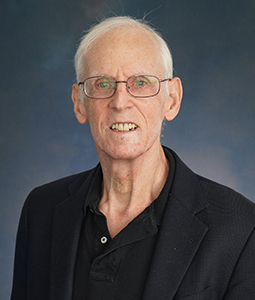Darla Moore School of Business
- SC.edu
- Study
- Colleges and Schools
- Darla Moore School of Business
- Directory
- Allen N. Berger
Directory
Allen N. Berger
| Title: | Carolina Distinguished Professor H. Montague Osteen, Jr., Professor of Banking and Finance |
| Department: | Finance Darla Moore School of Business |
| Email: | aberger@moore.sc.edu |
| Phone: | 803-576-8440 |
| Office: | Darla Moore School of Business, Room 457G |
| Resources: |

Background
Allen N. Berger is H. Montague Osteen, Jr., Professor in Banking and Finance, Carolina Distinguished Professor, Co-Founder/Co-Director of the Center for Financial Institutions (CFI) at the Darla Moore School of Business, Fixed Income-Financial Institutions Organizing Committee, officer of the Financial Intermediation Research Society (FIRS), and its 2022 President and Conference Program Chair.
He is affiliated with the Wharton Financial Institutions Center, European Banking Center, and other research centers around the world. He is currently on editorial boards of eight research journals, previously edited Journal of Money, Credit and Banking, eight special issues of four different journals, organized research conferences at universities and central banks, advised Ph.D. students in multiple departments at South Carolina and other universities around the world.
He has given invited keynote addresses on five continents, been visiting scholar at Federal Reserve Banks and central banks of other nations, addressed the European Central Bank (ECB), People’s Bank of China (PBOC), Central Banks of Latin America (CEMLA), Deutsche Bundesbank of Germany, Dutch National Bank of the Netherlands, Bank of Finland, and World Bank, won best paper awards from research journals and conferences, and awarded for both research and teaching at the University of South Carolina. Lifetime Service Award winner at the Southern Finance Association Meetings, Fajardo, Puerto Rico, November 2023.
He has 144 publications in refereed research journals, at least one each in 38 of the 39 years from 1987 to 2025, including 13 lead articles, papers in top finance journals: Journal of Finance, Journal of Financial Economics, Review of Financial Studies, Journal of Financial and Quantitative Analysis, Review of Finance, Journal of Financial Intermediation, Journal of Banking and Finance, Journal of Corporate Finance; top economics journals, Journal of Political Economy, American Economic Review, Review of Economics and Statistics, Journal of Monetary Economics, Journal of Money, Credit and Banking. Other top professional business journals include: Management Science, Journal of Business, Journal of International Business Studies, Contemporary Accounting Research, European Journal of Operational Research.
Professor Berger is co-author of three full-length research books, "The Economic and Financial Impacts of the COVID-19 Crisis Around the World: Expect the Unexpected" (2023), "TARP and other Bank Bailouts and Bail-Ins around the World: Connecting Wall Street, Main Street, and the Financial System" (2020), and "Bank Liquidity Creation and Financial Crises" (2016). He is also co-editor of all four editions of the "Oxford Handbook of Banking," 2010, 2015, 2019, and 2025, and more than 40 other research publications, such as book chapters and conference proceedings.
Professor Berger’s research impact registers over 111,000 Google Scholar citations, 36 articles with over 1,000 citations each, 21 additional exceeding 500 each, and H-Index of 114 https://scholar.google.com/citations?user=uEKU998AAAAJ&hl=en).
His most personally prized accomplishments are his parts in the successes of his students, interns, research assistants, and co-authors, whose joint accomplishments far exceed his own. Some have earned endowed chairs, full professorships, a major journal editorship, Federal Reserve Bank President, chair of a major finance department, head of a research department, and other personal successes. He hopes that many more are on their way, and will continue to support new and existing participants on the journey.
He was Senior Economist/Economist, Federal Reserve Board, 1982-2008; has a Ph.D. in Economics, University of California, Berkeley, 1983; B.A. in Economics, Northwestern University, 1976.
Liquidity creation data and related variables for US banks quarterly from 2003:Q1-2022:Q4.
https://www.dropbox.com/scl/fo/pk9escyl73jh25cbgu7aj/h?rlkey=42z69c4mmr8o4xt822m6lgi6i&e=1&dl=0
These data are explained and employed in the paper:
Berger, Allen N., Jiarui (Jerry) Guo, Xinming Li, Aluna Wang, and Wenting Wang, "The
Bank Liquidity Creation and Equity Capital Puzzle," working paper, August 2025.
- Please cite this paper when using these data.
Liquidity creation data and related variables for US banks quarterly from 1984:Q1-2016:Q4
from Christa Bouwman’s website.
https://sites.google.com/a/tamu.edu/bouwman/data-forms-and-links-to-websites-for-u-s-banking-research
The methodology to construct liquidity creation data is explained in: Berger, Allen N. and Christa H.S. Bouwman, 2009. “Bank Liquidity Creation,” Review of Financial Studies 22, 3779-3837.
- Please cite this paper when using these data.
Liquidity Hoarding Data from Hugh H. Kim’s website for US banks quarterly from 1984:Q1-2016:Q4.
https://drive.google.com/file/d/17YTPeLtvphLjov0D6QsqKunBqKw_H273/view?usp=sharing
The methodology to construct the liquidity hoarding data is explained in:
Berger, Allen N., Omrane Guedhami, Hugh H. Kim, and Xinming Li, 2022, “Economic Policy
Uncertainty and Bank Liquidity Hoarding,” Journal of Financial Intermediation 49, 100839.
- Please cite this paper when using these data.
Research
His research covers a variety of topics related to financial institutions.
Education
- Ph.D., University of California, Berkeley, 1983
- M.A., University of California, Berkeley, 1979
- B.A., Northwestern University, 1976